The State of SanDisk
by Kristian Vättö on December 5, 2014 8:00 AM EST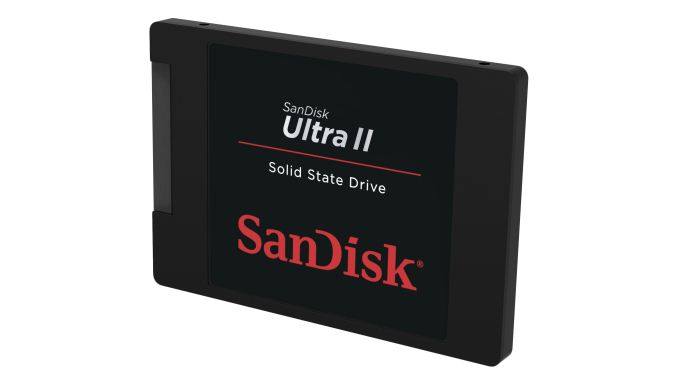
Back at Flash Memory Summit I had the opportunity to meet with all the key people at SanDisk. There is a lot going on at SanDisk at the moment with the Fusion-io acquisition, TLC NAND, and other things, so I figured I would write a piece that outlines SanDisk's current situation and what they're planning for the future.
I'll start with the client side. For SanDisk the big topic at this year's Flash Memory Summit was TLC NAND and we were given a sneak peek of the SanDisk Ultra II back at the show, which was then released a few weeks later. Since we have already reviewed the Ultra II, I'm not going to talk about the drive itself and its technical merits, but there are a few things that Kevin Conley, senior vice president and general manager for SanDisk's client business brought up about TLC and the client market in general.
I'm sure most of our long-time readers remember how SSD prices plummeted between 2010 and 2012. The reason for that wasn't a breakthrough in NAND technology, but merely the fact that all manufacturers increased their manufacturing capacity with the expectation of exponential NAND demand growth. As you can see in the graph above, the industry bit growth was over 60% year-over-year between 2010 and 2012, which lead to oversupply in the market and deflated the prices.
The reason why all NAND manufacturers invested so heavily on capacity increases was the popularity of smartphones and tablets; it was expected that the average storage capacity would increase over time. Basically, the NAND manufacturers assumed that decreases in NAND prices due to smaller lithographies would translate to higher capacity smartphones and tablets, but in fact the mobile companies chose to save on onboard storage and invest in other components instead (camera, SoC, etc.).
It's only been recently that smartphone and tablet manufacturers have started to increase the internal NAND and offer higher capacity models (e.g. the 128GB iPhone 6/6+), but even today the majority of devices are shipping with 16GB, which is the same capacity that the low-end iPhone 3GS had when it was introduced in 2009. Of course a large reason for the reduced sales of higher capacity smartphones/tablets has a lot to do with pricing, where 32GB devices often cost $100 more than the 16GB model.
Since the NAND manufacturers are now adding fab space at a slower pace, they are looking for alternate ways to increase bit growth and scale costs down – and that's where TLC kicks in. Because TLC packs in 50% more bits than MLC (three bits per cell instead of two), increasing the share of TLC production is an efficient way to boost bit growth without additional fab investments.
Currently about 45-50% of SanDisk's NAND production is TLC and by next year TLC will be overtaking MLC in terms of production volume. Note that SanDisk will have 3D NAND ready in 2016, so the graph doesn't imply that SanDisk will move to TLC-only production in 2017 – it is just the 2D NAND production moving to TLC since it will mostly be used in applications like USB flash drives and other low cost devices, while 3D NAND will be used in SSDs.
TLC will also be one of the driving forces behind average capacity increase. The main obstacle in SSD adoption is obviously the cost per gigabyte, and the lower production costs of TLC will help to bring the prices down. I think it's too early to say what kind of impact TLC will have on prices because currently there are only two drives available (SanDisk's Ultra II and Samsung's 840 EVO), but once more OEMs are ready with their TLC SSDs later this year and early next year, I believe we will see more aggressive pricing.
One of SanDisk's presentations at the show had a very interesting slide about the company's internal SSD deployment program. The question that is often debated when it comes to SSD endurance is the number of gigabytes that a user writes per day. There aren't really any studies with large sample sizes, but SanDisk's own study provides an interesting insight into typical office workloads.
What the data shows is that a typical office user only writes about 7GB per day on average and the number of people that write over 20GB is only a few percent, so very few users actually need more endurance than what TLC SSDs can offer (~20GB/day). Of course, everyone's usage is different and I doubt SanDisk's data takes e.g. media professionals properly into account, but it is still interesting and valuable data nonetheless.
Another thing I discussed with SanDisk was the obstacles for higher SSD adoption rate. While there is growth, the attach rate in the consumer space is still fairly modest and will remain as such for the next few years at least. Price is obviously one of the most important factors as hard drives are still an order of magnitude cheaper when measured in price per gigabyte, but I'm not sure if absolute price and capacity are the only hurdles anymore. I mean, 256GB is more than sufficient for the majority of users – especially now that we live in the era of Netflix and Spotify – and at ~$100 it's fairly affordable, so I think we have reached a point where the price is no longer the barrier preventing users from upgrading to SSDs.
This is actually the part where we ask for your, our readers, help. What is it that we or manufacturers like SanDisk could do to boost the SSD penetration in the market? Would live demonstrations at malls and other public places help? Or upgrade programs where you could take your PC to a store and they would do the upgrade there for you? Let us know your ideas in the comment section below and I'll make sure to bring them up with SanDisk and other SSD manufacturers. Remember that we are talking about the masses here, so think about your parents for instance – what would it take for them or other people who are not very comfortable around computers to upgrade their PCs with an SSD?
The one huge problem is of course the PC OEMs and convincing them to adopt SSDs for mainstream laptops. The race to the bottom practically killed the profits in the PC industry, which is why most of the mainstream (~$400-600) laptops have such a bad user experience (low-res TN panels, cheap plastic chassis, etc...). With already razor thin margins, the OEMs are very hesitant about increasing the BOMs and taking the risk of cutting their already-near-zero margins with SSDs. I know SanDisk and other SSD OEMs have tried to lobby SSDs to the PC OEMs as much as possible, but anything that adds cost gets a highly negative response from the PC OEMs.


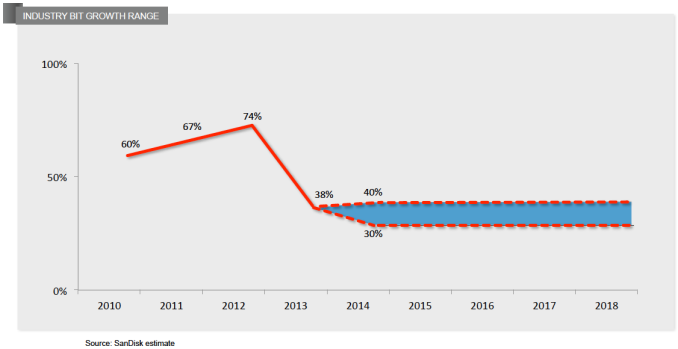
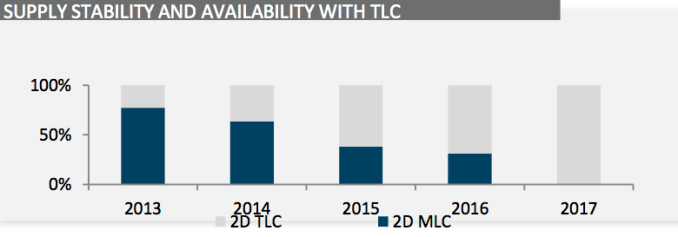
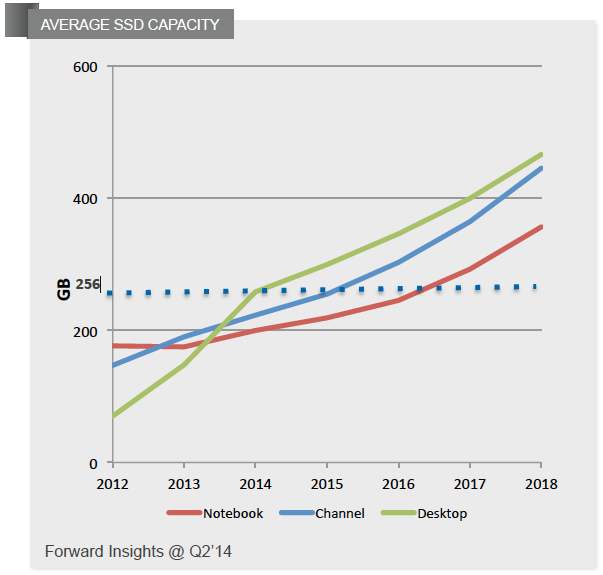
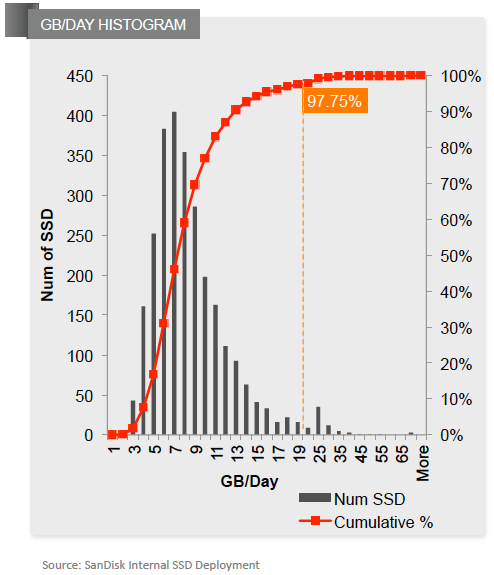









132 Comments
View All Comments
mojoxer - Friday, December 5, 2014 - link
Quit thinking about consumers. Partner with a major OEM (Dell or HP) to manufacture desktops for government and enterprise workstations. Use mSATA or SATA SSDs in the 64-128GB range for the OS install, as most government and enterprise users store the majority of their data on the enterprise server farms. Heavily market the automated hardware encryption for the local storage, as well as the increased reliability over the rotating disks. Reduced startup time is also a significant resource opportunity if you shave 2 minutes off the startup of 1,500 workstations in a single government office.Concillian - Friday, December 5, 2014 - link
Concincing OEMs is your biggest issue. I recently bought my wife a laptop. What I wanted was a low end CPU, IPS screen and SSD. You know what I found? ZERO OPTIONS. Can't get a low end CPU with a nice screen, only an i7. The model we settled on was nearly $1k and DIDN'T HAVE AN OPTION FOR AN SSD... I guess that's an upgrade down the road.'nar - Friday, December 5, 2014 - link
I am reminded of LCD panels and why they went to wide-screen formats. A 19" square cost more, and typical users did not understand why. When you do not know why, you only choose what you do know, price.I can understand OEM reluctance to add to the base cost, but they should add the option to the base unit. Many OEM's do not even have an SSD option that is priced anywhere near what they cost individually on the market. Many users just buy whatever is in the stores, or they insist on a "Dell" or whatever. They defer technical specifications to the OEM since they do not or cannot understand them.
You cannot hope to get the low-price segment until SSD's surpass HD in price per GB. You always get what you pay for. Better off targeting the discretionary spending on computers in the mid to high end where they are adding discrete graphics, beefier PSU's, water cooling, and higher-end computer cases.
It really should be easy when you speak to someone. What is the number one complaint about computers? They are slow. What is the slowest component in computers today? Spinning hard drives. Are you willing to pay more for a faster computer? End of discussion, that question is rhetorical. They have to make their own opinion.
Wall Street - Friday, December 5, 2014 - link
I just upgraded from a ReadyCache SSD accelerator to a 480 GB Ultra II during the Black Friday sales. I think that up until this year, for me, price was a primary deterrent to buying an SSD. Also, I think that a lot of people have been watching the bad press generated by OCZ, the Intel 8 MB bug, and Samsung;s recent TLC problems. I actually chose the Sandisk Ultra II because there products seem to have not experienced these bugs so far. Until it is clear that SSDs have passed their teething problems, everyone is going to view them as the potential new IBM GXP 60 Deathstar model that has potential future reliability problems.One of the tech guys at work asked how my SSD experience has been. I have honestly had to say that while I as an enthusiast found the ReadyCache to work well and the Ultra II is good so far, it is hard to recommend upgrading SSDs wildly given the bugs and the reputation risk of such a recommendation.
If I were SanDisk, I would focus on both speed and reliability. For example, the Ultra II that I bought is a relatively new drive and really only the second manufacturer on the market to use TLC. I think that the two pronged approach is needed to sell SSDs: 1) speed, which is easy to show based on the boot times and 2) reliability which would rely on customer testimony, warranty and data points lie Tech Report's SSD endurance experiment.
truongpham - Friday, December 5, 2014 - link
As I see around the web what is manufacturers want is not exactly customer want. The customer I mentioned here is casual customers. Who need faster start up, short program load and less shutdown time. In my personal viewpoint the hydrid HDDs is the best. The common size I think 1TB or 02 TB mechanic with 32GB SSD is enough. With my a amateur gamer I need 4TB or 6TB mechanic with 32GB SSD is ok. We need 300MB/s sequence read or wirte. 50k IOPS is enough.stancilmor - Saturday, December 6, 2014 - link
Getting non-computer people to upgrade a mechanical harddrive to an SSD isn't going to happen unless they have a computer friend that does the upgrade for them. I've personally bought and paid for 6 upgrades from mechanical drives to 256 GB SSDs for my non-computer friends...still have 3 or 4 more friends to upgrade. I buy the drive, borrow their computer, clone the drive, and then install the SDD, and give them their mechanical drive in a USB enclosure.From and industry stand point this means a (likely a free) service (either bring your computer in to the store and we'll upgrade it or we'll send a tech to your house and upgrade it).
The real battle is to get OEMs to quit using mechanical drives and start using SSDs. We still have the problem with not enough RAM. Before I upgraded to Windows 8.1 with 32 GB RAM, I had my XP machine tuned to boot with less than 180MB RAM, so that the remaining 3.2GB could be used for programs...I was almost always running out of RAM. I have friends that would complain that their system was slow...1GB RAM, but 4GB of virtual memory running all this software grinding away on the mechanical drive. Most of the time they had no idea what the software was or why it was one their machine.
My system is setup with hot plug system drives. One is an SSD and the rest are mechanical drives. I have an i5-3570k with 32 GBytes of RAM. I can tell you first hand there are times when the system is busy for 10s of minutes waiting on the mechanical drive (processor is nearly idle, but drive is at 100% busy), but when I do the same tasks with the SSD I don't notice the slow down (I'll still see the SSD at 100% busy, but the system remains functional for other drive access related tasks). I have the same problem at work only worse...slow mechanical drive that is encrypted, constantly backing up, constantly scanning for viruses, and constantly being monitored by the company IT security...That computer is also an i5, but it can take up to 45 minutes to boot. I've often thought about swapping the drive for and SSD, but my job isn't worth the risk of altering company property...so I just sit there and wait on the mechanical drive.
cm2187 - Saturday, December 6, 2014 - link
From my point of view, I don't need faster SSDs. Beating the SATA 3 specs won't have any visible impact on my usage. What I need is larger capacities and lower prices.StrangerGuy - Saturday, December 6, 2014 - link
Exactly, SSD performance is already good enough for the average user. The only thing left to work on is the price.KingCobra_14 - Saturday, December 6, 2014 - link
I think that in lesser developed countries like India where I live, the awareness of NAND storage is very less. As said above in the article, live demonstrations in Malls and shopping centers especially in metro cities would be a huge boon for consumers who want to make their PC faster just by a simple upgrade. There are not many high end PC users in the Indian market so they would most definitely consider the cheapest option. Processor: No, Graphics Card: Not worth unless you are a gamer, RAM: Probably if you have very less RAM to start with, SSD: YES.Rocket321 - Saturday, December 6, 2014 - link
Thinking about my parents, they need to really see it in action. They also don't buy much online. So I think to target the baby boomer and average Joe, having a well educated staff at retail stores is going to be the best. Price is high on the list as well - they were looking to spend just enough to get something that works, but not more. So an informed associate at Best buy with a demo station which lets buyers compare a ssd to a hdd side by side.Thinking back a few years when many people were on dial-up internet, there was a lot of success marketing DSL and cable as 10x, 30x, 600x faster than dial-up. I think putting the added performance in simple terms like this could also go a long way to reaching the average user.